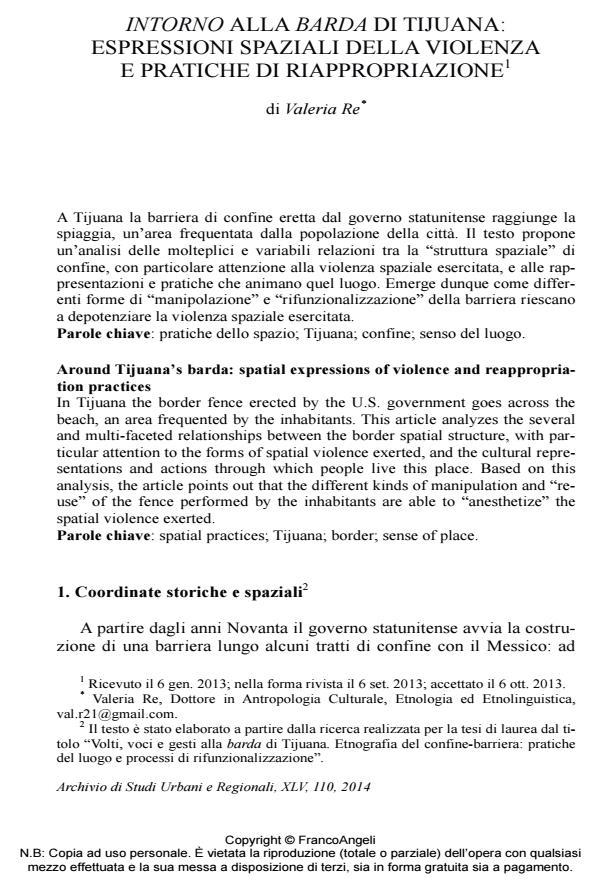Around Tijuana’s barda: spatial expressions of violence and reappropriation practices
Journal title ARCHIVIO DI STUDI URBANI E REGIONALI
Author/s Valeria Re
Publishing Year 2015 Issue 2014/110
Language Italian Pages 17 P. 40-56 File size 160 KB
DOI 10.3280/ASUR2014-110004
DOI is like a bar code for intellectual property: to have more infomation
click here
Below, you can see the article first page
If you want to buy this article in PDF format, you can do it, following the instructions to buy download credits

FrancoAngeli is member of Publishers International Linking Association, Inc (PILA), a not-for-profit association which run the CrossRef service enabling links to and from online scholarly content.
In Tijuana the border fence erected by the U.S. government goes across the beach, an area frequented by the inhabitants. This article analyzes the several and multi-faceted relationships between the border spatial structure, with particular attention to the forms of spatial violence exerted, and the cultural representations and actions through which people live this place. Based on this analysis, the article points out that the different kinds of manipulation and "reuse" of the fence performed by the inhabitants are able to "anesthetize" the spatial violence exerted.
Keywords: Spatial practices; Tijuana; border; sense of place.
Valeria Re, Intorno alla barda di Tijuana: espressioni spaziali della violenza e pratiche di riappropriazione in "ARCHIVIO DI STUDI URBANI E REGIONALI" 110/2014, pp 40-56, DOI: 10.3280/ASUR2014-110004